On This Page
The Best Anti-Snoring Mouthpieces and Mouthguards
Our Top Picks
-
Best Overall
Snore Less Now Somnofit-S Anti-Snore Mouthguard -
Most Comfortable
SnoreRx Mouthpiece -
Best Prescription Device
CareFusion ApneaRx Sleep Apnea Appliance -
Best Value
Sleepon M2 Anti-Snoring Mouthpiece -
Best for People with Sleep Apnea
American Sleep Dentistry Oral Appliance -
Best Tongue Stabilizer
Good Morning Snore Solution
Best Overall
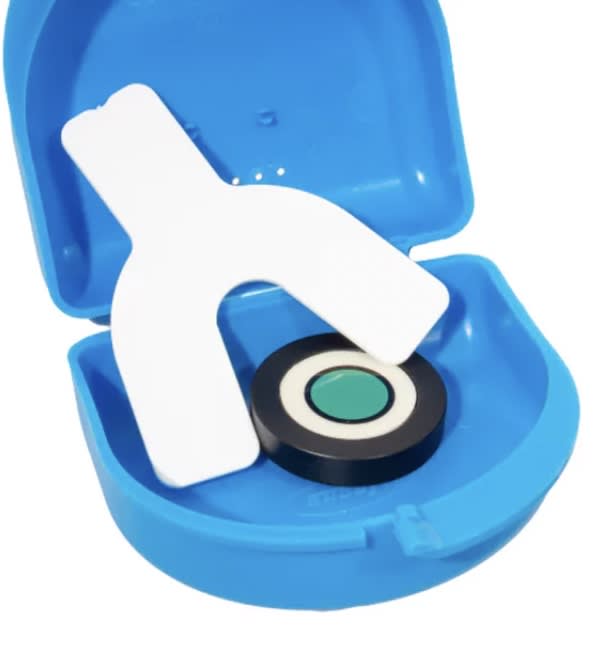
The Somnofit-S Anti-Snore Mouthguard from Snore Less Now is a standout mandibular advancement device (MAD) due to its customizable and adjustable design. Composed of durable biomedical polymer material, this mouthpiece is built to withstand wear and tear over time.
Pros & Cons
Pros
- MAD design moves the jaw forward to open up your airway and reduce snoring
- Advancement level can be adjusted with elastic straps
- Customizable using the boil-and-bite method
Cons
- May cause jaw pain and soreness for first-time users
- Expensive pricing compared to the competition
Full Details
Most Comfortable
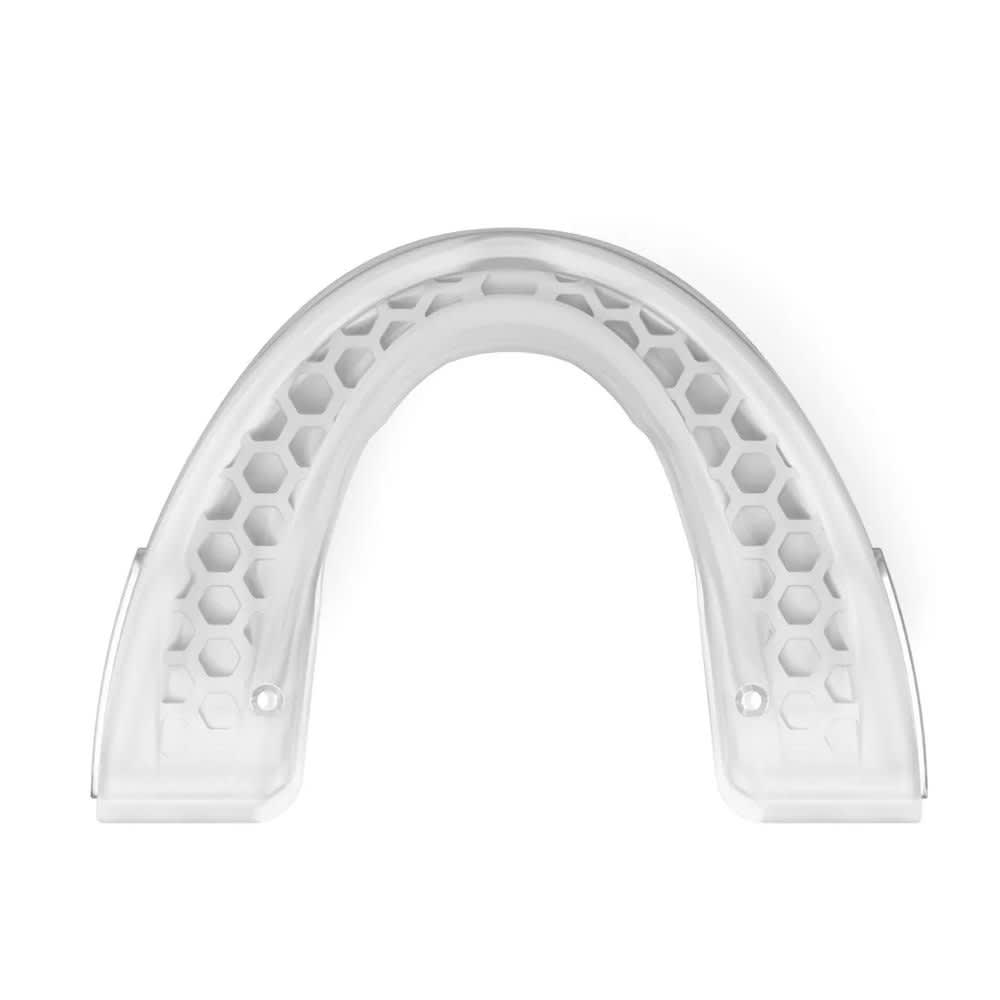
The SnoreRx checks a lot of boxes for people in search of a comfortable anti-snoring mouthguard. The device is easy to customize, fully adjustable, conducive to mouth breathing, and affordable.
Pros & Cons
Pros
- Users can make ongoing adjustments to jaw positioning
- Easy-to-use boil-and-bite design
- Competitive price-point
Cons
- Only comes in one size
- Some users may experience jaw or dental discomfort, especially at first
Full Details
Best Prescription Device
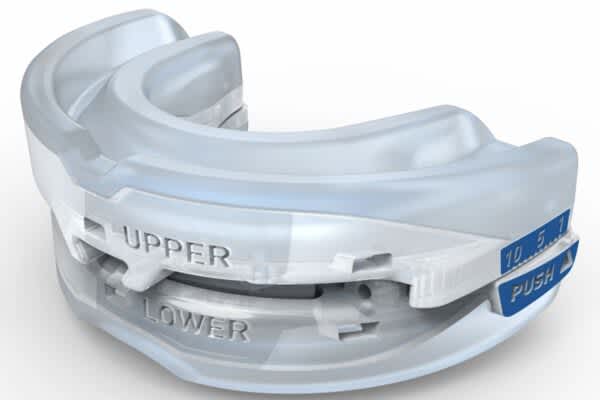
The CareFusion ApneaRx Sleep Apnea Mouthpiece is both customizable and adjustable, helping to ensure a comfortable fit for most wearers.
Pros & Cons
Pros
- Simple boil-and-bite customization process
- Adjustable in 1mm increments for a optimal comfort
- Can effectively treat snoring related to mild to moderate OSA
Cons
- Expensive pricing compared to the competition
- Not suitable for people with dental problems or TMJ
Full Details
Best Value
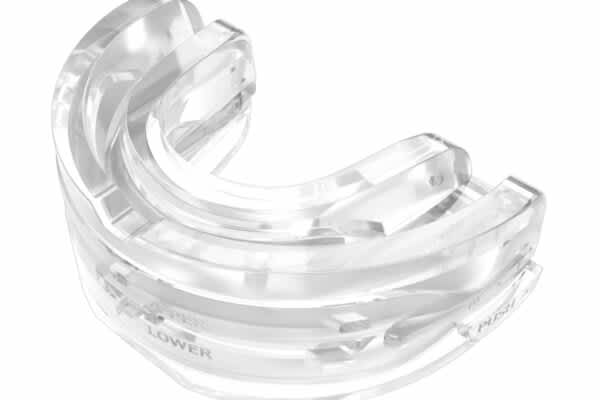
Priced much lower than the average MAD, the Sleepon M2 is an effective anti-snoring mouthpiece that can also reduce teeth clenching and grinding. This device can also be customized using boil-and-bite trays and easily adjusted without extra tools.
Pros & Cons
Pros
- Adjustable design lets you pinpoint your most comfortable advancement level
- Customizable using the easy boil-and-bite method
- Device can also minimize clenching and grinding of teeth
Cons
- People with loose teeth and gum disease need a different solution
- Long-term use can cause jaw pain
Full Details
Best for People with Sleep Apnea
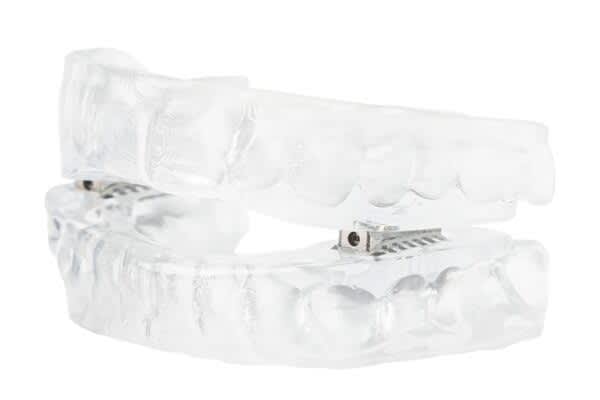
Not all people who snore have sleep apnea, but OSA is a leading cause of heavy snoring and people who have been diagnosed with this sleep disorder often benefit from using a specialized mouthpiece. The American Sleep Dentistry Oral Appliance is one of the most advanced MADs on the market — you’ll pay a premium price for the device, but people who snore due to sleep apnea should see major results.
Pros & Cons
Pros
- Mouthpiece is fitted in a lab to ensure high-quality customization
- Device has been FDA-cleared for OSA treatment
- Daily cleaning is a quick, straightforward process
Cons
- Jaw pain may occur
- Much more expensive than the average anti-snoring mouthpiece
Full Details
Best Tongue Stabilizer
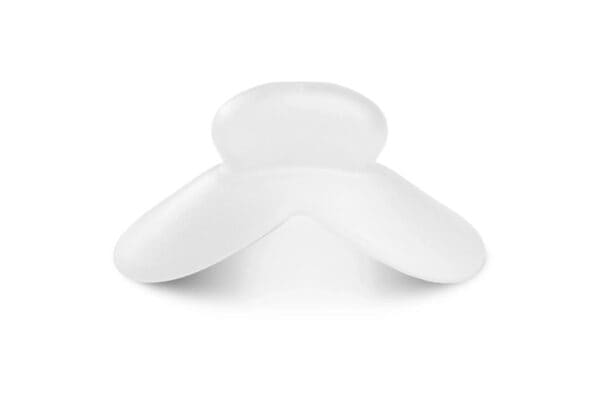
The Good Morning Snore Solution’s unobtrusive design is ideal for anyone who can’t use MADs due to their medical or dental history. Easy application and a lightweight design make the device a hassle-free alternative to traditional mouthguards.
Pros & Cons
Pros
- Simple suction holds tongue forward with no need for custom fitting
- Doesn’t affect teeth or jaw placement, so it’s less likely to cause morning pain
- Minimalist design works with dentures
Cons
- Limits mouth movement
- Tongue may not stay attached when the device is wet
Full Details
How We Make Our Picks
We tested over a dozen mouthguards and mouthpieces before picking the best ones. Our sleep product experts tried both mandibular advancement devices (MADs) and tongue-retaining devices (TRDs). To test these anti-snoring guards, our team members slept at least one night with a mouthpiece, then recorded how well they worked, their fit, and general comfort. Regular and occasional snorers on our team tested efficacy, while the non-snorers reported on comfort and customization.
Is an Anti-Snoring Mouthpiece Right for You?
An anti-snoring mouthpiece might be right for you if you experience simple snoring with no other symptoms. These devices are generally affordable and easy to source. Additionally, anti-snoring mouthpieces are often available without a prescription.
Anti-snoring devices do come with some potential side effects, most notably drooling and jaw discomfort as you adjust to the mouthpiece. If these side effects bother you, you may prefer other methods to reduce snoring.
You may not be able to wear an anti-snoring mouthpiece if you’ve had recent dental work, if you’re missing teeth, if you have a large overbite, or if you wear braces, a retainer, or dentures. Conditions such as asthma, central sleep apnea, periodontal disease, or chronic jaw pain may also make it unwise to use an anti-snoring mouthpiece.
Listen, no one wants to wear a mouthpiece to bed, but if it saves your partner’s sanity, it’s definitely worth it.
How Do They Work?
The sound of snoring occurs when muscles relax during sleep and allow soft tissues to block the airway, causing audible vibrations as air works to pass through the smaller space. Anti-snoring mouthpieces widen the airway by either forcing the lower jaw forward or holding the tongue in place.
Types of Anti-Snoring Mouthpieces
The two primary types of anti-snoring mouthpieces are mandibular advancement devices and tongue-retaining devices.
Mandibular Advancement Devices (MADs)
Snoring is often triggered by the lower jaw, or mandible, slipping backward during sleep. Mandibular advancement devices work by bringing the lower jaw forward to keep the airway open. These devices typically use a boil-and-bite process to mold the device to your teeth. MADs may be especially effective if your snoring is at its worst when lying on your back.
MADs can be uncomfortable at first. Some users may experience dry mouth, drooling, or tooth and gum pain. However, many people find that these side effects improve after several weeks.
Tongue-Retaining Devices (TRDs)
Tongue-retaining devices work to keep the airway open by either holding the tongue down with prongs or pulling it forward using gentle suction to prevent it from falling back and blocking the throat.
TRDs are less popular than MADs, but some people prefer TRDs because they don’t exert as much pressure on the teeth and jawbone. As with many MADs, mouth movements may be limited when wearing a TRD. Some users may experience soreness in the tongue, teeth, or gums when they first start using the device.
You need to do some research before choosing an anti-snoring device. There are two main types – one that brings your jaw forward (an MAD) and one that holds your tongue down (a TRD). Your sleeping position and facial structure may do better with one versus the other.
Video: How You Can Stop Snoring
Watch our video to learn more about snoring, what causes it, and tips for stopping it.
How to Choose an Anti-Snoring Mouthpiece
Anti-snoring mouthpieces from different manufacturers may look similar, but subtle differences in design and materials can impact how comfortable and effective they are.
Adjustability and Customization
Most MADs can be customized to fit your teeth using the boil-and-bite method, similar to a sports mouthguard. Some models also allow you to slide the lower jaw forward in small increments until you find a position that keeps your airway open without feeling too uncomfortable. It may take a few days to adjust to each change.
TRDs are less often customizable, although they may come in different sizes.
Comfort
It can feel uncomfortable to wear a mouthpiece, especially if it’s bulky or if the edges or screws chafe against the inside of your mouth. You can reduce discomfort by selecting a model made with soft materials in a size that fits comfortably inside your mouth.
It may help to start by wearing your new device for short periods during the day. After the initial adjustment period, most sleepers grow accustomed to the feel of the mouthguard and no longer experience significant side effects.
Some, but not all, mouthpieces leave a small opening in case you need to breathe through your mouth. You may find it helpful to use a mouth lubricant if your mouthguard prevents you from fully closing your mouth during sleep. If you have trouble with the mouthpiece falling out, try using a chin strap.
Quality
MADs and TRDs are typically made of medical-grade thermoplastic, which can be molded to eliminate sharp edges and fit the shape of your mouth. This material is resistant to wear and tear, and the best anti-snoring mouthguards are reinforced with extra layers or extra-strong hinges to hold up better against jaw clenching and tooth grinding.
Tongue-retaining devices may be made of softer materials like silicone. Manufacturers usually take care to avoid harmful materials like bisphenol A (BPA) or allergens such as latex, but it’s a good idea to verify the materials before purchasing.
Ease of Cleaning
Anti-snoring mouthpieces need daily cleaning. Most devices can be cleaned with a toothbrush, toothpaste, and warm water. If ease of maintenance is an important factor for you, bear in mind that models with hinges or other extra parts may be more difficult to keep clean.
Pricing
The average cost of an over-the-counter MAD or TRD lies between $50 and $100, with some manufacturers offering subscription plans at a discounted price. Higher-priced models may offer more customization options or better-quality materials. Expect to pay much more for a custom-fitted, medical-grade mouthpiece from a dentist.
Prescription Requirements and Insurance Coverage
Anti-snoring mouthpieces are widely available online and in stores with no need for a prescription. You may also be able to obtain a mouthpiece through your dentist or doctor.
Over-the-counter mouthpieces used for snoring generally do not qualify for insurance coverage, although you may be able to use a flexible spending account or health savings account to defray the cost.
Medicare offers coverage for certain oral appliances if they are used to treat obstructive sleep apnea (OSA), in which case you’ll need a prescription and you’ll need to fulfill the Medicare requirements.
Trial and Warranty
Manufacturers may offer a short trial period, typically between 30 and 60 nights, so you can try out the mouthpiece and return it for a refund if it doesn’t work for you. Since anti-snoring mouthpieces fit each person differently, this trial period can be useful when deciding between models. Keep in mind that you may not qualify for the trial if you buy through a third-party seller.
Mouthpieces may also be covered by a warranty against defects in materials and workmanship.
Frequently Asked Questions
Limited research suggests that anti-snoring mouthpieces can effectively reduce snoring for many people. However, since the reasons for snoring vary from person to person, you may find that some trial and error is needed before finding a solution that works for you.
Anti-snoring mouthpieces are generally considered safe for use by people over 18 years old. They’re designed to be too big to swallow or choke on, and they don’t pose any direct danger to the upper airway. However, it’s a good idea to talk to your dentist before using one, as they may move the position of your jaw or teeth.
If you have a medical condition such as central sleep apnea, a respiratory disorder, dental or jaw problems, or if you wear a dental device, you should consult with your doctor or dentist, as it may not be safe for you to wear a mouthguard. Anti-snoring mouthpieces sold over the counter aren’t intended to treat teeth grinding or sleep apnea, and they shouldn’t be considered a substitute for medical treatment of these conditions.
When choosing an anti-snoring mouthpiece, look for reputable brands that are cleared for treating snoring by the Food and Drug Administration.
The expected lifespan of an anti-snoring mouthpiece can range from two months up to three years, depending on the materials and how well it’s maintained. You may wear down your mouthpiece sooner if you grind your teeth or clench your jaw.
If you have symptoms of obstructive sleep apnea such as daytime sleepiness or waking up gasping for air, you should not attempt to self-treat the condition with an anti-snoring mouthpiece. Although these devices may help reduce snoring, which is a common symptom of OSA, it’s important to get proper medical treatment to avoid long-term health impacts.
Over-the-counter anti-snoring mouthpieces differ from oral appliances specifically designed to treat sleep apnea. The latter devices require a prescription following an OSA diagnosis.
Most mouthpieces can be gently cleaned with a soft toothbrush and a mild soap or nonabrasive toothpaste. Avoid using hot water. Check the user guide for specific instructions on cleaning solutions that are safe to use with your device.
You should clean the mouthpiece every time you take it out of your mouth, let it dry, and store it in its case. To keep your mouthpiece clean, always brush your teeth before inserting the device.
While anti-snoring mouthpieces can be an effective treatment option for snoring, many people find they can reduce snoring and also improve their overall health with lifestyle changes, such as losing weight and avoiding alcohol or sedatives before bed. Propping up the head of the bed with an adjustable base may also reduce snoring. Some people find that using a specially designed pillow, such as a wedge pillow, helps with snoring.
For snoring that worsens during allergy season, it may be helpful to use nasal sprays to clear your nasal passages. Speak with your doctor if you have concerns about your snoring, as it may be a sign of a more serious health condition.
